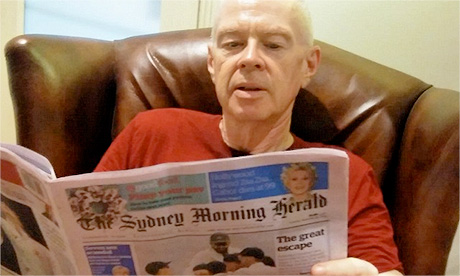About 15 years ago, I was editing the Catholic Church’s online news service CathNews Australia, when stories about clerical sexual abuse were beginning to appear in significant numbers.
It was usually difficult to find a photograph or other visual image to illustrate the abuse stories. But eventually I settled on one generic image that I felt would suit all of them. It was a plain and simple graphic depicting a priest’s clerical collar.
I recall that we stopped using it following representations from more than one bishop.
The first was a gentle plea.
We were tarnishing the good name of the clergy and damaging the reputation of the Church.
Then came the more heavy handed ‘cease and desist’ order that gave us no choice.
There had been no protracted deliberation involved in my choice of the image.
Like a lot of decisions editors made on the run, it was intuitive. But in hindsight – as the Royal Commission into Institutional Responses to Child Sexual Abuse wraps up – it seems prescient.
I say this after seeing this week’s issue of the email newsletter from Francis Sullivan of the Church’s Truth Justice and Healing Council.
One of its headlines was extracted from a story published in the National Catholic Reporter in the US: ‘Australian bishop urges end to clericalism’.
The article features the views of Bishop Vincent Long of Parramatta based on a talk he gave in August that was published in the December issue of the National Council of Priests newsletter The Swag. It points to the culture of clericalism as a major cause of sexual abuse.
‘In my testimony at the Royal Commission I maintained that we need to dismantle the pyramid model…which promotes the superiority of the ordained. … Abuse in the area of sex is a form of abuse of power. I believe that we cannot address the issue of clerical sexual abuse without examining the clerical culture in which unhealthy attitudes and behaviours are fostered.’
It is often possible to know a priest’s views about power and privilege in the Church simply by looking to see if he is wearing a clerical collar.
In many circumstances, priests will make a deliberate choice whether or not to wear the collar, knowing its symbolic power. Continue reading
- Michael Mullins is retired and living in Sydney. He is a former editor of both CathNews Australia and Eureka Street.
News category: Analysis and Comment.




